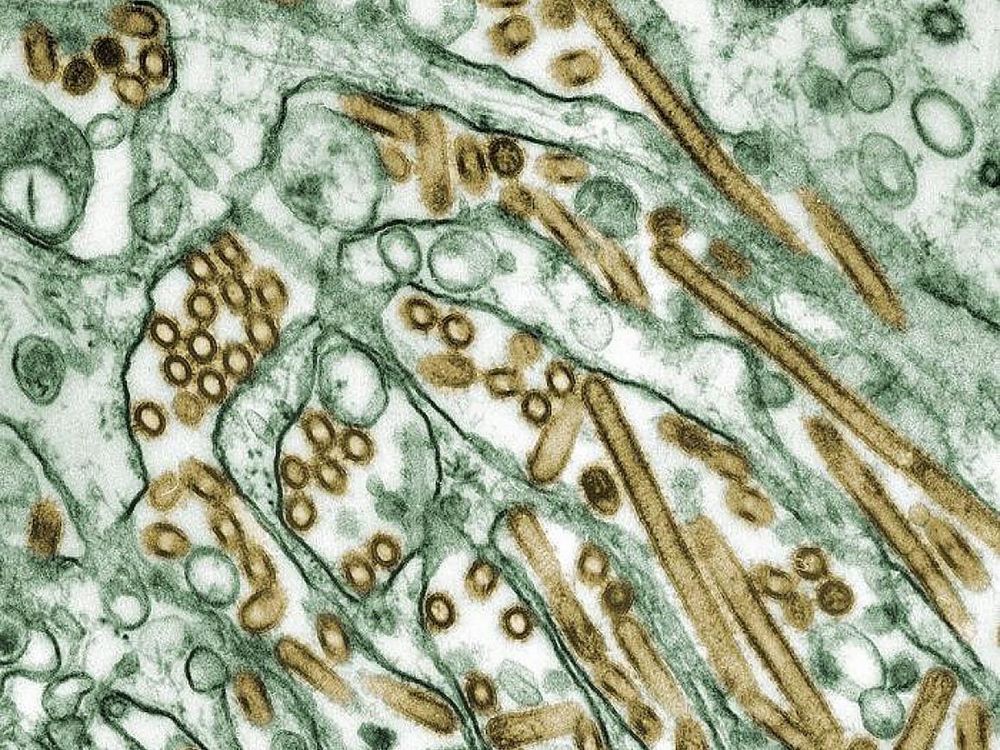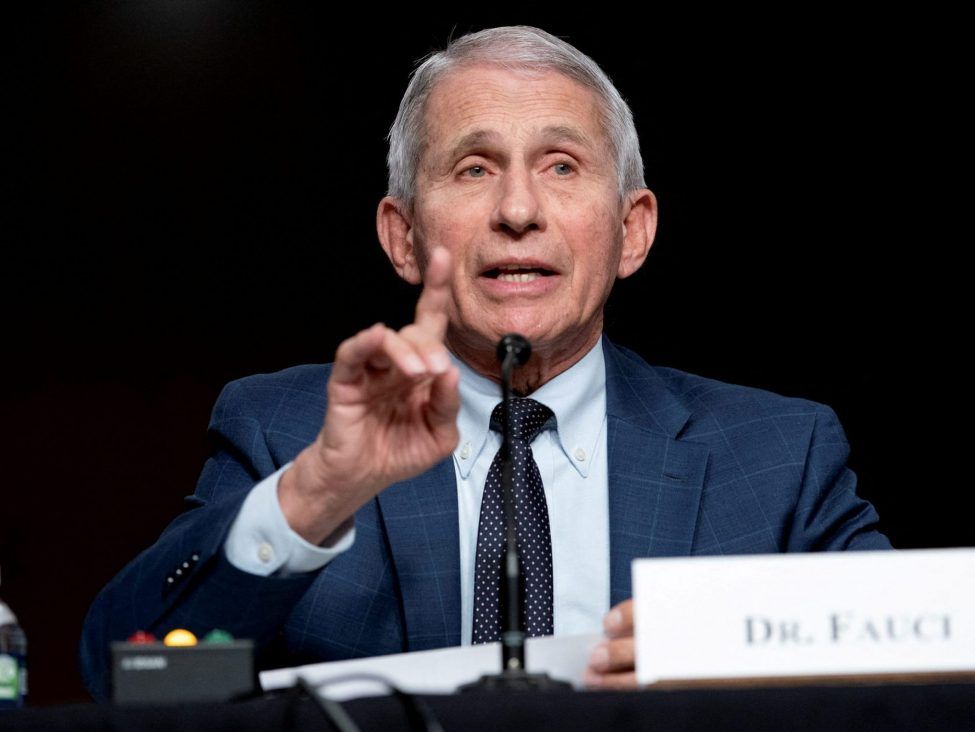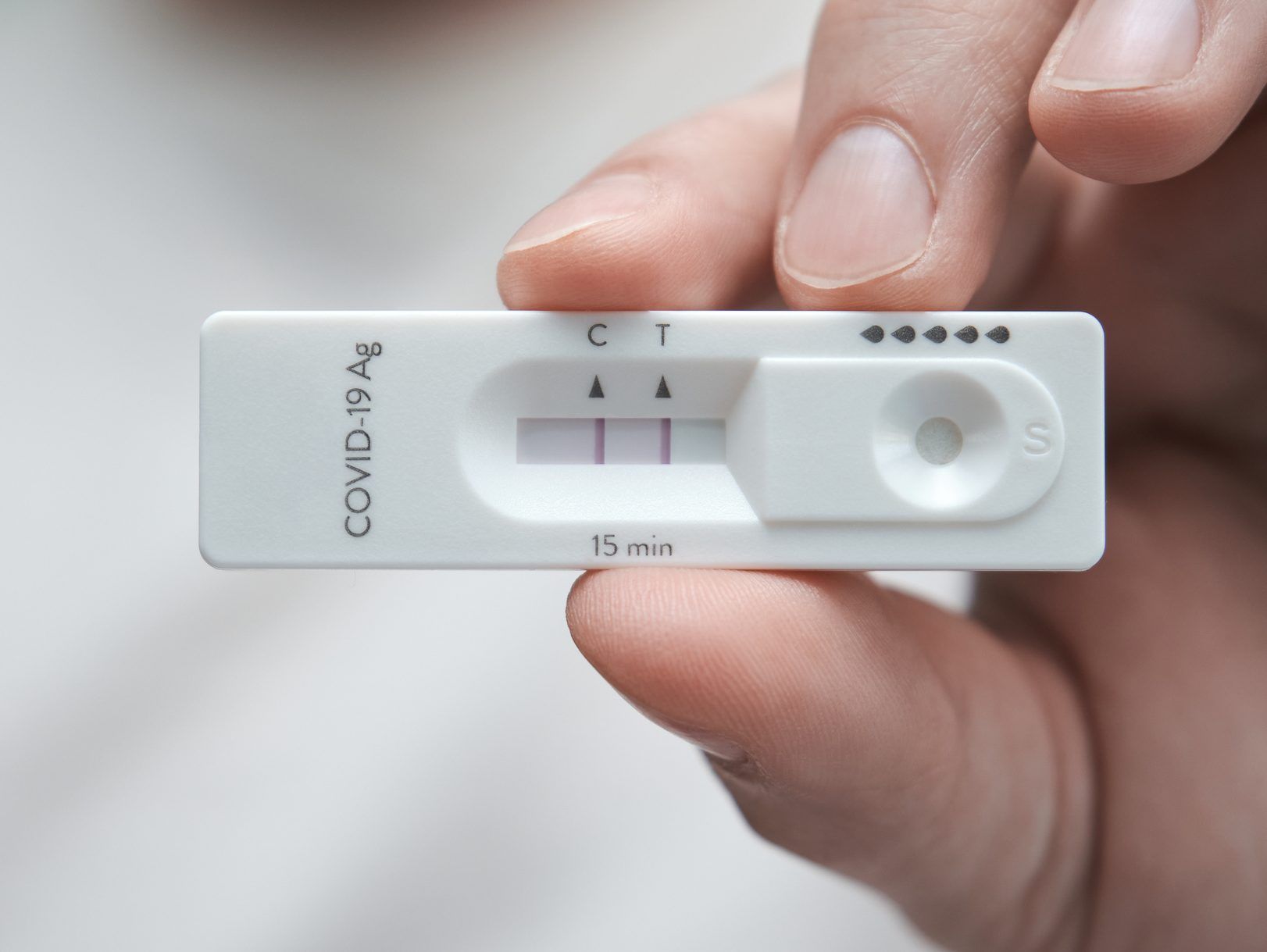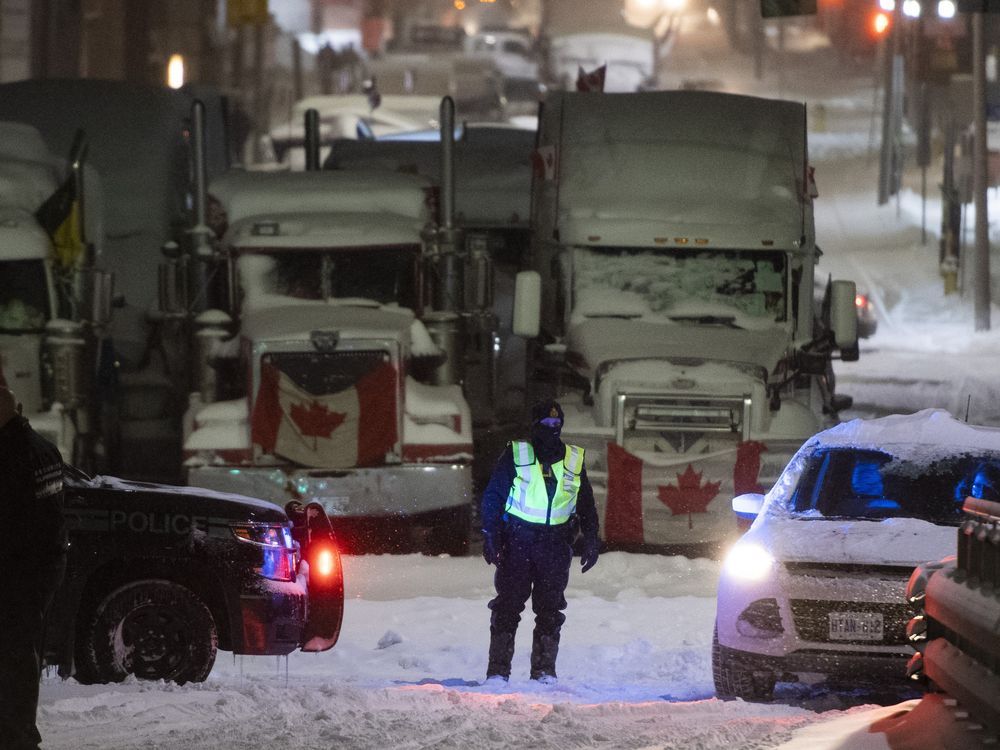Isn’t this the same drug all the dumbocraps said was fake when Trump recommended it? We’re they wrong again?
Just another antiviral effect.
COVID-19 'Pandemic'
- Thread starter Ocean Breeze
- Start date
You are using an out of date browser. It may not display this or other websites correctly.
You should upgrade or use an alternative browser.
You should upgrade or use an alternative browser.
Always trust the experts and the science , they knew orange man bad .Isn’t this the same drug all the dumbocraps said was fake when Trump recommended it? We’re they wrong again?
No, but you're too stupid to understand the difference, so I won't waste my time explaining to a hunk of concrete.Isn’t this the same drug all the dumbocraps said was fake when Trump recommended it? We’re they wrong again?
Over your head is it?No, but you're too stupid to understand the difference, so I won't waste my time explaining to a hunk of concrete.
Clearly over yours to understand the difference between veterinary meds and human meds, but that's OK.Over your head is it?
But its not vet meds ya gullible wanker.Clearly over yours to understand the difference between veterinary meds and human meds, but that's OK.
Ivermectin tablets are approved by the FDA to treat people with intestinal strongyloidiasis and onchocerciasis, two conditions caused by parasitic worms. In addition, some topical forms of ivermectin are approved to treat external parasites like head lice and for skin conditions such as rosacea.Dec 10, 2021
https://www.fda.gov › consumers
Avian flu found in about 100 carcasses of seals found in Quebec
Author of the article:Canadian Press
Canadian Press
Publishing date:Aug 03, 2022 • 18 hours ago • 1 minute read • Join the conversation
Colourized transmission electron micrograph of Avian influenza A H5N1 viruses (seen in gold) grown in MDCK cells (seen in green) as shown in this undated handout photo.
Colourized transmission electron micrograph of Avian influenza A H5N1 viruses (seen in gold) grown in MDCK cells (seen in green) as shown in this undated handout photo. PHOTO BY HO /THE CANADIAN PRESS
MONTREAL — Quebec researchers say avian flu has been detected in at least two species of seal as an unusually high number of dead seals are being reported on the province’s shorelines.
The Reseau quebecois d’urgences pour les mammiferes marins says about 100 carcasses of harbour seals were found since January along the south shore of the Lower St. Lawrence region, almost six times more than on an average year.
Stephane Lair, a professor of veterinary medicine at Universite de Montreal, says about 15 of these harbour seals have tested positive for the highly pathogenic H5N1, with a first case detected in grey seals last week.
He says seals most likely have been in contact with carcasses of infected eider ducks, with which they share the same islands to give birth at the beginning of the summer.
Jean-Francois Gosselin, a biologist with Fisheries and Oceans Canada, says these are the first reported cases of the virus being passed from wild birds to marine mammals in Quebec.
He says while the agency is monitoring the virus transmission, the situation isn’t concerning or a threat to endangering the seal population.


 torontosun.com
torontosun.com
Author of the article:Canadian Press
Canadian Press
Publishing date:Aug 03, 2022 • 18 hours ago • 1 minute read • Join the conversation
Colourized transmission electron micrograph of Avian influenza A H5N1 viruses (seen in gold) grown in MDCK cells (seen in green) as shown in this undated handout photo.
Colourized transmission electron micrograph of Avian influenza A H5N1 viruses (seen in gold) grown in MDCK cells (seen in green) as shown in this undated handout photo. PHOTO BY HO /THE CANADIAN PRESS
MONTREAL — Quebec researchers say avian flu has been detected in at least two species of seal as an unusually high number of dead seals are being reported on the province’s shorelines.
The Reseau quebecois d’urgences pour les mammiferes marins says about 100 carcasses of harbour seals were found since January along the south shore of the Lower St. Lawrence region, almost six times more than on an average year.
Stephane Lair, a professor of veterinary medicine at Universite de Montreal, says about 15 of these harbour seals have tested positive for the highly pathogenic H5N1, with a first case detected in grey seals last week.
He says seals most likely have been in contact with carcasses of infected eider ducks, with which they share the same islands to give birth at the beginning of the summer.
Jean-Francois Gosselin, a biologist with Fisheries and Oceans Canada, says these are the first reported cases of the virus being passed from wild birds to marine mammals in Quebec.
He says while the agency is monitoring the virus transmission, the situation isn’t concerning or a threat to endangering the seal population.


Avian flu found in about 100 carcasses of seals found in Quebec
MONTREAL — Quebec researchers say avian flu has been detected in at least two species of seal as an unusually high number of dead seals are being reported on the pr…
My dog is diabetic. I just found out I am slightly too......You be givin' me ideas.......lolClearly over yours to understand the difference between veterinary meds and human meds, but that's OK.
You both need to cut out the milk bone brand bisquits and go whole grain organic with fish omegas. It works for the Urinal family. (Trudeau translates to "trough of water")My dog is diabetic. I just found out I am slightly too......You be givin' me ideas.......lol
West Virginia man sentenced to 3 years in prison for threatening to kill Fauci
Author of the article:Reuters
Reuters
Brendan O'Brien
Publishing date:Aug 05, 2022 • 20 hours ago • 2 minute read • Join the conversation
A federal judge sentenced a West Virginia man to three years in prison for sending intimidating emails to Anthony Fauci, including threats to kill the United States’ top infectious disease official over his handling of the COVID-19 pandemic.
U.S. District Judge Paula Xinis in Greenbelt, Maryland, on Thursday sentenced Thomas Connally Jr., 56, of Snowshoe, West Virginia, to 37 months in federal prison and another three years of supervised release after he pleaded guilty in May to a federal charge of making threats against a federal official.
In one email, Connally threatened that Fauci and his family would be “dragged into the street, beaten to death, and set on fire,” prosecutors said.
In a plea bargain, Connally admitted he sent threatening emails to Fauci, hoping to intimidate and interfere with his official duties as the National Institute of Allergy and Infectious Diseases’ director and to retaliate against him for his handling of the pandemic, the U.S. Attorney’s Office in Maryland said in a statement.
The response to the pandemic by federal and state officials has been highly contentious across the United States, re-igniting a long-standing U.S. battle over individual rights, the constitutional remit of states to police citizens, public health and public activities, such as education or retail businesses.
Many public officials have been heavily criticized and have been the targets of protests and threats for masking and vaccine mandates around the country, where more than 1 million people have died due to the virus.
Connally, who accused Fauci of “fear mongering,” was under stress in connection with his mother’s isolation in a nursing home during the pandemic, a public defender wrote in a letter to the court on Wednesday.
Investigators wrote in court documents that Connally described himself on his resume as an information architect, editor and technical writer.
The man admitted to investigators that he had sent a series of threatening emails to Fauci and other state and federal health officials from an anonymous, encrypted email account from December 2020 to July 2021.
Connally also admitted sending threatening messages to health officials in Pennsylvania and Massachusetts, Francis Collins, the then-director of the U.S. National Institutes of Health; and four individuals working for a religious institution in New Jersey, prosecutors said.

 torontosun.com
torontosun.com
Author of the article:Reuters
Reuters
Brendan O'Brien
Publishing date:Aug 05, 2022 • 20 hours ago • 2 minute read • Join the conversation
A federal judge sentenced a West Virginia man to three years in prison for sending intimidating emails to Anthony Fauci, including threats to kill the United States’ top infectious disease official over his handling of the COVID-19 pandemic.
U.S. District Judge Paula Xinis in Greenbelt, Maryland, on Thursday sentenced Thomas Connally Jr., 56, of Snowshoe, West Virginia, to 37 months in federal prison and another three years of supervised release after he pleaded guilty in May to a federal charge of making threats against a federal official.
In one email, Connally threatened that Fauci and his family would be “dragged into the street, beaten to death, and set on fire,” prosecutors said.
In a plea bargain, Connally admitted he sent threatening emails to Fauci, hoping to intimidate and interfere with his official duties as the National Institute of Allergy and Infectious Diseases’ director and to retaliate against him for his handling of the pandemic, the U.S. Attorney’s Office in Maryland said in a statement.
The response to the pandemic by federal and state officials has been highly contentious across the United States, re-igniting a long-standing U.S. battle over individual rights, the constitutional remit of states to police citizens, public health and public activities, such as education or retail businesses.
Many public officials have been heavily criticized and have been the targets of protests and threats for masking and vaccine mandates around the country, where more than 1 million people have died due to the virus.
Connally, who accused Fauci of “fear mongering,” was under stress in connection with his mother’s isolation in a nursing home during the pandemic, a public defender wrote in a letter to the court on Wednesday.
Investigators wrote in court documents that Connally described himself on his resume as an information architect, editor and technical writer.
The man admitted to investigators that he had sent a series of threatening emails to Fauci and other state and federal health officials from an anonymous, encrypted email account from December 2020 to July 2021.
Connally also admitted sending threatening messages to health officials in Pennsylvania and Massachusetts, Francis Collins, the then-director of the U.S. National Institutes of Health; and four individuals working for a religious institution in New Jersey, prosecutors said.

West Virginia man sentenced to 3 years in prison for threatening to kill Fauci
A federal judge sentenced a West Virginia man to three years in prison for sending intimidating emails to Anthony Fauci, including threats to kill the United States…
West Virginia man sentenced to 3 years in prison for threatening to kill Fauci
Author of the article:Reuters
Reuters
Brendan O'Brien
Publishing date:Aug 05, 2022 • 20 hours ago • 2 minute read • Join the conversation
A federal judge sentenced a West Virginia man to three years in prison for sending intimidating emails to Anthony Fauci, including threats to kill the United States’ top infectious disease official over his handling of the COVID-19 pandemic.
U.S. District Judge Paula Xinis in Greenbelt, Maryland, on Thursday sentenced Thomas Connally Jr., 56, of Snowshoe, West Virginia, to 37 months in federal prison and another three years of supervised release after he pleaded guilty in May to a federal charge of making threats against a federal official.
In one email, Connally threatened that Fauci and his family would be “dragged into the street, beaten to death, and set on fire,” prosecutors said.
In a plea bargain, Connally admitted he sent threatening emails to Fauci, hoping to intimidate and interfere with his official duties as the National Institute of Allergy and Infectious Diseases’ director and to retaliate against him for his handling of the pandemic, the U.S. Attorney’s Office in Maryland said in a statement.
The response to the pandemic by federal and state officials has been highly contentious across the United States, re-igniting a long-standing U.S. battle over individual rights, the constitutional remit of states to police citizens, public health and public activities, such as education or retail businesses.
Many public officials have been heavily criticized and have been the targets of protests and threats for masking and vaccine mandates around the country, where more than 1 million people have died due to the virus.
Connally, who accused Fauci of “fear mongering,” was under stress in connection with his mother’s isolation in a nursing home during the pandemic, a public defender wrote in a letter to the court on Wednesday.
Investigators wrote in court documents that Connally described himself on his resume as an information architect, editor and technical writer.
The man admitted to investigators that he had sent a series of threatening emails to Fauci and other state and federal health officials from an anonymous, encrypted email account from December 2020 to July 2021.
Connally also admitted sending threatening messages to health officials in Pennsylvania and Massachusetts, Francis Collins, the then-director of the U.S. National Institutes of Health; and four individuals working for a religious institution in New Jersey, prosecutors said.

West Virginia man sentenced to 3 years in prison for threatening to kill Fauci
A federal judge sentenced a West Virginia man to three years in prison for sending intimidating emails to Anthony Fauci, including threats to kill the United States…torontosun.com
Yes, because all the scientists and doctors and others involved should have said nothing about Covid and let it run rampant, denied it was a problem and... yeah.
Fuck this guy, he should have gotten longer time.
It seems that you didn't pay attention then.No, but you're too stupid to understand the difference, so I won't waste my time explaining to a hunk of concrete.
When Trump did the therapeutics and they worked, it was then that they were banned - because he actually had taken them & exposed them so that people could access them because when first diagnosed, these therapeutics actually worked. Well, Biden simply couldn't sanction that so they made these therapeutics illegal to obtain or use. What a bunch of assholes!! You hate someone so bad that you would deny basic healthcare to those who contracted covid? Seriously? How evil is that? To hold back legitimate healthcare from your citizens possibly preventing thousands of deaths. But no, because "orange man" took the therapeutics and recovered quite quickly, that could not be sanctioned.
The only reason therapeutics were not available was simply because Trump had them - no other reason whatsoever!!
How disgusting!
Health Canada warns of counterfeit COVID-19 rapid antigen tests in Ontario
Author of the article:Canadian Press
Canadian Press
Publishing date:Aug 05, 2022 • 1 day ago • 1 minute read • 5 Comments
Health Canada has issued a public warning after it says counterfeit COVID-19 rapid antigen test kits were found in Ontario.
The agency says the counterfeit tests were sold online in 25-pack boxes by a distributor called Healthful Plus without the required licence.
It says the packaging resembles authentic products by BTNX Inc. and uses the device identifier “COV-19C25,” but also has several key differences.
Those include the manufacturer being listed as Health Advance Inc. rather than BTNX Inc.; Health Advance being listed as an “official Canadian distributor”; and the addition of the text “Health Canada approved” on the box.
Health Canada says it has not assessed the safety and effectiveness of the counterfeit kits.
The agency says anyone who suspects they have a counterfeit kit should refrain from using it and instead report it, either to the government or to BTNX.
Health Canada says the issue appears to be limited to one manufacturer, Health Advance Inc., and one distributor, Healthful Plus. It says Health Advance appears to no longer be making medical devices and Healthful Plus’s website has been taken down.

 torontosun.com
torontosun.com
Author of the article:Canadian Press
Canadian Press
Publishing date:Aug 05, 2022 • 1 day ago • 1 minute read • 5 Comments
Health Canada has issued a public warning after it says counterfeit COVID-19 rapid antigen test kits were found in Ontario.
The agency says the counterfeit tests were sold online in 25-pack boxes by a distributor called Healthful Plus without the required licence.
It says the packaging resembles authentic products by BTNX Inc. and uses the device identifier “COV-19C25,” but also has several key differences.
Those include the manufacturer being listed as Health Advance Inc. rather than BTNX Inc.; Health Advance being listed as an “official Canadian distributor”; and the addition of the text “Health Canada approved” on the box.
Health Canada says it has not assessed the safety and effectiveness of the counterfeit kits.
The agency says anyone who suspects they have a counterfeit kit should refrain from using it and instead report it, either to the government or to BTNX.
Health Canada says the issue appears to be limited to one manufacturer, Health Advance Inc., and one distributor, Healthful Plus. It says Health Advance appears to no longer be making medical devices and Healthful Plus’s website has been taken down.

Health Canada warns of counterfeit COVID-19 rapid antigen tests in Ontario
Health Canada has issued a public warning after it says counterfeit COVID-19 rapid antigen test kits were found in Ontario.
West Nile Virus turns up in Toronto mosquitoes
Author of the article:Liz Braun
Publishing date:Aug 09, 2022 • 17 hours ago • 1 minute read • Join the conversation
Toronto health officials report that mosquitoes in five pools have tested positive for West Nile Virus
Toronto health officials report that mosquitoes in five pools have tested positive for West Nile Virus
Toronto Public Health (TPH) confirms that West Nile Virus has turned up in five pools of mosquitoes in the city where testing is carried out.
West Nile Virus (WNV) is transmitted to humans by infected mosquitoes.
The pools of mosquitoes with positive results are from locations in Etobicoke, North York and west of the downtown area.
West Nile can be very serious and even fatal for older people and anyone who is immunocompromised.
Symptoms, which usually develop between two and 14 days after a person is bitten by an infected mosquito, may include fever, headache, nausea, vomiting, body aches, skin rash and swollen lymph glands.
TPH conducts mosquito surveillance from mid-June until mid-September annually.
Once a week, 22 mosquito traps are set across the city to collect mosquitoes that are then submitted to a laboratory for identification and grouped by the lab into pools for testing.
In 2021, a total of 20 positive mosquito pools were reported.
As the Canadian government website notes, infected dead birds are one indication of areas that are at high risk for WNV. Jays, magpies, ravens and crows are particularly at risk.
Horses are also at high risk for WNV.
There were 163 cases of WNV in Canada in 2020, but only 35 cases were recorded last year.
It is believed the true number of infections is much higher.
The risk of being infected in Toronto is low, but Toronto Public Health advises there are various precautions you can take.
Remove all standing water from your property, because that’s where mosquitoes breed.
Wear light-coloured clothing, including long pants and long-sleeved shirts, when outdoors, and use insect repellent that contains DEET or icaridin.
Be extra careful at dawn and dusk, which is when mosquitoes bite most.
Check that door and window screens are tight-fitting and without holes.
 canada.ca
canada.ca

 torontosun.com
torontosun.com
Author of the article:Liz Braun
Publishing date:Aug 09, 2022 • 17 hours ago • 1 minute read • Join the conversation
Toronto health officials report that mosquitoes in five pools have tested positive for West Nile Virus
Toronto health officials report that mosquitoes in five pools have tested positive for West Nile Virus
Toronto Public Health (TPH) confirms that West Nile Virus has turned up in five pools of mosquitoes in the city where testing is carried out.
West Nile Virus (WNV) is transmitted to humans by infected mosquitoes.
The pools of mosquitoes with positive results are from locations in Etobicoke, North York and west of the downtown area.
West Nile can be very serious and even fatal for older people and anyone who is immunocompromised.
Symptoms, which usually develop between two and 14 days after a person is bitten by an infected mosquito, may include fever, headache, nausea, vomiting, body aches, skin rash and swollen lymph glands.
TPH conducts mosquito surveillance from mid-June until mid-September annually.
Once a week, 22 mosquito traps are set across the city to collect mosquitoes that are then submitted to a laboratory for identification and grouped by the lab into pools for testing.
In 2021, a total of 20 positive mosquito pools were reported.
As the Canadian government website notes, infected dead birds are one indication of areas that are at high risk for WNV. Jays, magpies, ravens and crows are particularly at risk.
Horses are also at high risk for WNV.
There were 163 cases of WNV in Canada in 2020, but only 35 cases were recorded last year.
It is believed the true number of infections is much higher.
The risk of being infected in Toronto is low, but Toronto Public Health advises there are various precautions you can take.
Remove all standing water from your property, because that’s where mosquitoes breed.
Wear light-coloured clothing, including long pants and long-sleeved shirts, when outdoors, and use insect repellent that contains DEET or icaridin.
Be extra careful at dawn and dusk, which is when mosquitoes bite most.
Check that door and window screens are tight-fitting and without holes.
Surveillance of West Nile virus - Canada.ca
Learn about the different types of surveillance for West Nile virus and the reported number of cases in humans.

West Nile Virus turns up in Toronto mosquitoes
Toronto Public Health (TPH) confirms that West Nile Virus has turned up in five pools of mosquitoes in the city where testing is carried out.
Number of Ontarians dying while waiting for surgery spiked in pandemic
A total of 1,417 people died waiting for some kind of surgery in 2021-22
Author of the article:Brian Lilley
Publishing date:Aug 15, 2022 • 18 hours ago • 3 minute read • 22 Comments
Patients dying while waiting for surgery or diagnostic testing isn’t new, but things definitely got worse during the pandemic.
An analysis of records from Ontario Health shows a 43% increase in deaths of people waiting for surgery compared to pre-pandemic, a 38% increase in patients who died waiting for a CT scan, and 23% increase in those who died waiting for an MRI.
The analysis, conducted by think-tank SecondStreet.org, was based on information released by Ontario Health through Freedom of Information requests. The government agency said they cannot state that any of these people died as a result of missed or delayed procedures.
“Mortality is impacted by many complex and interrelated clinical, socioeconomic and cultural factors,” the agency said when releasing the data, noting the statistics “do not indicate the procedures were intended to be life saving.”
Nor do the statistics say the surgeries and tests were not meant to be life saving. It’s true that some patients may have died of other causes, could have even been killed in a car accident while waiting for a procedure, but increases this large at a time when hospitals were shutting down anything deemed “non-essential” points in the direction of more people dying because they didn’t get the treatment they needed.
According to government statistics, there were 986 people who died waiting on a surgery in 2019-20, the fiscal year before the pandemic took over. In 2020-21, that increased to 1,096, a level still within the usual range of the previous four years.
After two years of delayed treatments and lockdowns, the big spike happened. A total of 1,417 people died waiting for some kind of surgery in 2021-22, a 43.7% increase over the pre-pandemic numbers and a 34.6% increase over the average of the four pre-pandemic years numbers were released for.
FIGURES SHOW NEED FOR CHANGE
“Government rationing and mismanagement in health care are costing some patients their lives and many others their quality of life in their final years,” SecondStreet.org president Colin Craig said in a statement.
Craig said he hopes these figures prompts Ontario Health Minister Sylvia Jones to ask some blunt questions.
“How many of these patients died waiting for procedures which could have potentially saved their lives? How many spent their final years waiting in chronic pain while waiting for procedures like hip operations and knee operations? How many developed depression or mental health issues due to their long wait for care?” Craig said.
He also noted that while there was a tremendous spike during the last year of the pandemic, deaths from waiting lists have been a problem for many years, as his organization has documented. SecondStreet.org has long called for governments to think outside the box in looking for solutions to the seemingly never-ending problem of wait times in health care.
“Decades of throwing more and more money at the health-care system hasn’t worked,” Craig said.
In fall 2021, the organization commissioned a poll through Leger which found two-thirds of Canadians agreed with taking many tests and surgeries out of backlogged hospitals.
“Governments should pay private and non-profit clinics to perform surgeries, procedures and diagnostic scans to reduce waiting times for patients,” the statement in the poll read.
While 67% agreed with that statement, just 18% disagreed and 15% said they did not know.
Ontario already has widespread use of such clinics for diagnostics but relatively few for surgical procedures. The Ford government has said they are looking for innovative solutions to the current health-care crisis and that could include moving simple surgeries to such clinics.
THE RAW NUMBERS IN FULL:
Number of patients who died while waiting for surgery:
2021-22: 1,417
2020-21: 1,096
2019-20: 986
2018-19: 1,039
2017-18: 1,138
2016-17: 1,045
Number of patients who died while waiting for a CT scan:
2021-22: 5,404
2020-21: 4,624
2019-20: 3,924
2018-19: 3,991
2017-18: 3,346
2016-17: 2,838
Number of patients who died while waiting for an MRI scan:
2021-22: 1,993
2020-21: 1,867
2019-20: 1,610
2018-19: 1,363
2017-18: 1,171
2016-17: 1,058
blilley@postmedia.com
 secondstreet.org
secondstreet.org

 torontosun.com
torontosun.com
A total of 1,417 people died waiting for some kind of surgery in 2021-22
Author of the article:Brian Lilley
Publishing date:Aug 15, 2022 • 18 hours ago • 3 minute read • 22 Comments
Patients dying while waiting for surgery or diagnostic testing isn’t new, but things definitely got worse during the pandemic.
An analysis of records from Ontario Health shows a 43% increase in deaths of people waiting for surgery compared to pre-pandemic, a 38% increase in patients who died waiting for a CT scan, and 23% increase in those who died waiting for an MRI.
The analysis, conducted by think-tank SecondStreet.org, was based on information released by Ontario Health through Freedom of Information requests. The government agency said they cannot state that any of these people died as a result of missed or delayed procedures.
“Mortality is impacted by many complex and interrelated clinical, socioeconomic and cultural factors,” the agency said when releasing the data, noting the statistics “do not indicate the procedures were intended to be life saving.”
Nor do the statistics say the surgeries and tests were not meant to be life saving. It’s true that some patients may have died of other causes, could have even been killed in a car accident while waiting for a procedure, but increases this large at a time when hospitals were shutting down anything deemed “non-essential” points in the direction of more people dying because they didn’t get the treatment they needed.
According to government statistics, there were 986 people who died waiting on a surgery in 2019-20, the fiscal year before the pandemic took over. In 2020-21, that increased to 1,096, a level still within the usual range of the previous four years.
After two years of delayed treatments and lockdowns, the big spike happened. A total of 1,417 people died waiting for some kind of surgery in 2021-22, a 43.7% increase over the pre-pandemic numbers and a 34.6% increase over the average of the four pre-pandemic years numbers were released for.
FIGURES SHOW NEED FOR CHANGE
“Government rationing and mismanagement in health care are costing some patients their lives and many others their quality of life in their final years,” SecondStreet.org president Colin Craig said in a statement.
Craig said he hopes these figures prompts Ontario Health Minister Sylvia Jones to ask some blunt questions.
“How many of these patients died waiting for procedures which could have potentially saved their lives? How many spent their final years waiting in chronic pain while waiting for procedures like hip operations and knee operations? How many developed depression or mental health issues due to their long wait for care?” Craig said.
He also noted that while there was a tremendous spike during the last year of the pandemic, deaths from waiting lists have been a problem for many years, as his organization has documented. SecondStreet.org has long called for governments to think outside the box in looking for solutions to the seemingly never-ending problem of wait times in health care.
“Decades of throwing more and more money at the health-care system hasn’t worked,” Craig said.
In fall 2021, the organization commissioned a poll through Leger which found two-thirds of Canadians agreed with taking many tests and surgeries out of backlogged hospitals.
“Governments should pay private and non-profit clinics to perform surgeries, procedures and diagnostic scans to reduce waiting times for patients,” the statement in the poll read.
While 67% agreed with that statement, just 18% disagreed and 15% said they did not know.
Ontario already has widespread use of such clinics for diagnostics but relatively few for surgical procedures. The Ford government has said they are looking for innovative solutions to the current health-care crisis and that could include moving simple surgeries to such clinics.
THE RAW NUMBERS IN FULL:
Number of patients who died while waiting for surgery:
2021-22: 1,417
2020-21: 1,096
2019-20: 986
2018-19: 1,039
2017-18: 1,138
2016-17: 1,045
Number of patients who died while waiting for a CT scan:
2021-22: 5,404
2020-21: 4,624
2019-20: 3,924
2018-19: 3,991
2017-18: 3,346
2016-17: 2,838
Number of patients who died while waiting for an MRI scan:
2021-22: 1,993
2020-21: 1,867
2019-20: 1,610
2018-19: 1,363
2017-18: 1,171
2016-17: 1,058
blilley@postmedia.com
http://secondstreet.org/wp-content/uploads/2021/12/Second-Street-Canadians-Warm-to-Health-Reform.pdf
Waiting List Deaths Spike in Ontario – SecondStreet.Org
 secondstreet.org
secondstreet.org

LILLEY: Number of Ontarians dying while waiting for surgery spiked in pandemic
Patients die waiting for surgery every year but with Ontario hospitals cancelling procedures during COVID, the numbers shot up.
Intelligence report flagged possible 'violent revenge' after Ottawa protest shutdown
Author of the article:Canadian Press
Canadian Press
Jim Bronskill
Publishing date:Aug 17, 2022 • 19 hours ago • 3 minute read • 81 Comments
OTTAWA — Newly disclosed documents show federal intelligence officials warned decision-makers that the police dispersal of “Freedom Convoy” protesters in Ottawa last winter could prompt an “opportunistic attack” against a politician or symbol of government.
The Feb. 24 “threat highlight,” marked Secret/Canadian Eyes Only, also advised that extremist “influencers” would leverage the outcome of the protests for continued recruitment and propaganda, regardless of whether COVID-19 pandemic restrictions were relaxed.
Ideologically motivated extremists would likely use police enforcement “to encourage violent revenge or as further evidence of government ‘tyranny,”‘ the four-page assessment said.
The partially redacted memo, obtained by The Canadian Press through the Access to Information Act, was among several Integrated Terrorism Assessment Centre analyses produced before, during and after the protests that paralyzed downtown Ottawa for three weeks beginning in late January.
The centre, overseen by the Canadian Security Intelligence Service, brings together security and intelligence professionals from various agencies to draft terrorism threat assessments, based on classified and open-source information, to share with partners at home and abroad.
The aim is to provide senior decision-makers with the latest and most detailed information to assess the overall threat and risk level.
Protesters, many with large trucks, occupied central Ottawa streets to rail against COVID-19 health measures and Justin Trudeau’s Liberal government. The influx, including some participants who had roots in the far-right movement, prompted many businesses to shut their doors and aggravated residents with noise, diesel fumes and harassing behaviour.
On Feb. 14, the government invoked the Emergencies Act, which allowed for temporary measures including regulation and prohibition of public assemblies, the designation of secure places, direction to banks to freeze assets and a ban on support for participants.
Authorities towed away trucks, arrested more than 200 people and laid hundreds of charges.
Extremist ideologues portrayed the police response as “brutality” and the use of the Emergencies Act as further evidence of federal “tyranny,” comparing the government tactics to those of foreign dictatorships, the Feb. 24 assessment noted. It added that several online incitements to violence had surfaced, with some implying that direct action against politicians, police and even their families was the only option left.
“That’s something that typically happens with these sorts of movements,” said Barbara Perry, director of the Centre on Hate, Bias and Extremism at Ontario Tech University.
“When you push back against them, they use that as yet more evidence that they’re the ones under attack, that their assessment is right, that they are being silenced, that they are the ones being marginalized and threatened by that tyrannical state, as they like to call it.”
The “Freedom Convoy” and related protests at government buildings and border crossings fuelled anti-authority sentiments among adherents of ideologically motivated violent extremism, or IMVE, the Feb. 24 assessment said.
“The perceived notion that societal resilience is fragile, or that the government/police response justifies violent resistance, could inspire a lone actor or small group inspired by IMVE to conduct an opportunistic attack against a political figure or symbol of government,” the analysts concluded.
“Supporters of IMVE will continue to encourage, and capitalize on, anti-government sentiments and protest movements, whether related to the pandemic or other issues, in an attempt to degrade public confidence and social cohesion, and to attract vulnerable individuals to their ideological cause.”
The future loosening of public health restrictions might calm the protest movement, but people who embrace violent extremism, particularly those “wanting to accelerate the demise of current social and political orders, are unlikely to be placated,” the assessment said.
“IMVE threats to political figures and government symbols will persist into the foreseeable future.”
The national capital would see followup protests, including a late June procession that included many of the figures involved in the winter events.
“They’ve really set the stage and drawn more people in around a broader distrust of government, science, academics, media — all of those institutions,” Perry said. “So, I think they’ll continue to find ways to exploit those anxieties, exploit those grievances that they’ve helped to create, or at least exacerbate.”
The terrorism assessment centre began tracking the truck convoy headed to Ottawa as early as Jan. 26, producing a secret assessment that flagged the possibility of opportunistic violence on the margins of the protest.
A Feb. 3 analysis said a co-ordinated terrorist attack or a planned storming of Parliament Hill or other federal locations were unlikely.
“The most likely IMVE-related scenario involves an inspired lone actor using available weapons and resources such as knives, firearms, homemade explosives and vehicles in public areas against soft targets, including opposition groups or members of the public.”

 torontosun.com
torontosun.com
Author of the article:Canadian Press
Canadian Press
Jim Bronskill
Publishing date:Aug 17, 2022 • 19 hours ago • 3 minute read • 81 Comments
OTTAWA — Newly disclosed documents show federal intelligence officials warned decision-makers that the police dispersal of “Freedom Convoy” protesters in Ottawa last winter could prompt an “opportunistic attack” against a politician or symbol of government.
The Feb. 24 “threat highlight,” marked Secret/Canadian Eyes Only, also advised that extremist “influencers” would leverage the outcome of the protests for continued recruitment and propaganda, regardless of whether COVID-19 pandemic restrictions were relaxed.
Ideologically motivated extremists would likely use police enforcement “to encourage violent revenge or as further evidence of government ‘tyranny,”‘ the four-page assessment said.
The partially redacted memo, obtained by The Canadian Press through the Access to Information Act, was among several Integrated Terrorism Assessment Centre analyses produced before, during and after the protests that paralyzed downtown Ottawa for three weeks beginning in late January.
The centre, overseen by the Canadian Security Intelligence Service, brings together security and intelligence professionals from various agencies to draft terrorism threat assessments, based on classified and open-source information, to share with partners at home and abroad.
The aim is to provide senior decision-makers with the latest and most detailed information to assess the overall threat and risk level.
Protesters, many with large trucks, occupied central Ottawa streets to rail against COVID-19 health measures and Justin Trudeau’s Liberal government. The influx, including some participants who had roots in the far-right movement, prompted many businesses to shut their doors and aggravated residents with noise, diesel fumes and harassing behaviour.
On Feb. 14, the government invoked the Emergencies Act, which allowed for temporary measures including regulation and prohibition of public assemblies, the designation of secure places, direction to banks to freeze assets and a ban on support for participants.
Authorities towed away trucks, arrested more than 200 people and laid hundreds of charges.
Extremist ideologues portrayed the police response as “brutality” and the use of the Emergencies Act as further evidence of federal “tyranny,” comparing the government tactics to those of foreign dictatorships, the Feb. 24 assessment noted. It added that several online incitements to violence had surfaced, with some implying that direct action against politicians, police and even their families was the only option left.
“That’s something that typically happens with these sorts of movements,” said Barbara Perry, director of the Centre on Hate, Bias and Extremism at Ontario Tech University.
“When you push back against them, they use that as yet more evidence that they’re the ones under attack, that their assessment is right, that they are being silenced, that they are the ones being marginalized and threatened by that tyrannical state, as they like to call it.”
The “Freedom Convoy” and related protests at government buildings and border crossings fuelled anti-authority sentiments among adherents of ideologically motivated violent extremism, or IMVE, the Feb. 24 assessment said.
“The perceived notion that societal resilience is fragile, or that the government/police response justifies violent resistance, could inspire a lone actor or small group inspired by IMVE to conduct an opportunistic attack against a political figure or symbol of government,” the analysts concluded.
“Supporters of IMVE will continue to encourage, and capitalize on, anti-government sentiments and protest movements, whether related to the pandemic or other issues, in an attempt to degrade public confidence and social cohesion, and to attract vulnerable individuals to their ideological cause.”
The future loosening of public health restrictions might calm the protest movement, but people who embrace violent extremism, particularly those “wanting to accelerate the demise of current social and political orders, are unlikely to be placated,” the assessment said.
“IMVE threats to political figures and government symbols will persist into the foreseeable future.”
The national capital would see followup protests, including a late June procession that included many of the figures involved in the winter events.
“They’ve really set the stage and drawn more people in around a broader distrust of government, science, academics, media — all of those institutions,” Perry said. “So, I think they’ll continue to find ways to exploit those anxieties, exploit those grievances that they’ve helped to create, or at least exacerbate.”
The terrorism assessment centre began tracking the truck convoy headed to Ottawa as early as Jan. 26, producing a secret assessment that flagged the possibility of opportunistic violence on the margins of the protest.
A Feb. 3 analysis said a co-ordinated terrorist attack or a planned storming of Parliament Hill or other federal locations were unlikely.
“The most likely IMVE-related scenario involves an inspired lone actor using available weapons and resources such as knives, firearms, homemade explosives and vehicles in public areas against soft targets, including opposition groups or members of the public.”

Intelligence report flagged possible 'violent revenge' after Ottawa protest shutdown
Officials warned that the dispersal of "Freedom Convoy" protesters could prompt an "attack" against a politician or government symbol.
That's racist!Intelligence report flagged possible 'violent revenge' after Ottawa protest shutdown
Author of the article:Canadian Press
Canadian Press
Jim Bronskill
Publishing date:Aug 17, 2022 • 19 hours ago • 3 minute read • 81 Comments
The Feb. 24 “threat highlight,” marked Secret/Canadian Eyes Only,
What a bunch of B.S. lots of would could and should .Intelligence report flagged possible 'violent revenge' after Ottawa protest shutdown
Author of the article:Canadian Press
Canadian Press
Jim Bronskill
Publishing date:Aug 17, 2022 • 19 hours ago • 3 minute read • 81 Comments
OTTAWA — Newly disclosed documents show federal intelligence officials warned decision-makers that the police dispersal of “Freedom Convoy” protesters in Ottawa last winter could prompt an “opportunistic attack” against a politician or symbol of government.
The Feb. 24 “threat highlight,” marked Secret/Canadian Eyes Only, also advised that extremist “influencers” would leverage the outcome of the protests for continued recruitment and propaganda, regardless of whether COVID-19 pandemic restrictions were relaxed.
Ideologically motivated extremists would likely use police enforcement “to encourage violent revenge or as further evidence of government ‘tyranny,”‘ the four-page assessment said.
The partially redacted memo, obtained by The Canadian Press through the Access to Information Act, was among several Integrated Terrorism Assessment Centre analyses produced before, during and after the protests that paralyzed downtown Ottawa for three weeks beginning in late January.
The centre, overseen by the Canadian Security Intelligence Service, brings together security and intelligence professionals from various agencies to draft terrorism threat assessments, based on classified and open-source information, to share with partners at home and abroad.
The aim is to provide senior decision-makers with the latest and most detailed information to assess the overall threat and risk level.
Protesters, many with large trucks, occupied central Ottawa streets to rail against COVID-19 health measures and Justin Trudeau’s Liberal government. The influx, including some participants who had roots in the far-right movement, prompted many businesses to shut their doors and aggravated residents with noise, diesel fumes and harassing behaviour.
On Feb. 14, the government invoked the Emergencies Act, which allowed for temporary measures including regulation and prohibition of public assemblies, the designation of secure places, direction to banks to freeze assets and a ban on support for participants.
Authorities towed away trucks, arrested more than 200 people and laid hundreds of charges.
Extremist ideologues portrayed the police response as “brutality” and the use of the Emergencies Act as further evidence of federal “tyranny,” comparing the government tactics to those of foreign dictatorships, the Feb. 24 assessment noted. It added that several online incitements to violence had surfaced, with some implying that direct action against politicians, police and even their families was the only option left.
“That’s something that typically happens with these sorts of movements,” said Barbara Perry, director of the Centre on Hate, Bias and Extremism at Ontario Tech University.
“When you push back against them, they use that as yet more evidence that they’re the ones under attack, that their assessment is right, that they are being silenced, that they are the ones being marginalized and threatened by that tyrannical state, as they like to call it.”
The “Freedom Convoy” and related protests at government buildings and border crossings fuelled anti-authority sentiments among adherents of ideologically motivated violent extremism, or IMVE, the Feb. 24 assessment said.
“The perceived notion that societal resilience is fragile, or that the government/police response justifies violent resistance, could inspire a lone actor or small group inspired by IMVE to conduct an opportunistic attack against a political figure or symbol of government,” the analysts concluded.
“Supporters of IMVE will continue to encourage, and capitalize on, anti-government sentiments and protest movements, whether related to the pandemic or other issues, in an attempt to degrade public confidence and social cohesion, and to attract vulnerable individuals to their ideological cause.”
The future loosening of public health restrictions might calm the protest movement, but people who embrace violent extremism, particularly those “wanting to accelerate the demise of current social and political orders, are unlikely to be placated,” the assessment said.
“IMVE threats to political figures and government symbols will persist into the foreseeable future.”
The national capital would see followup protests, including a late June procession that included many of the figures involved in the winter events.
“They’ve really set the stage and drawn more people in around a broader distrust of government, science, academics, media — all of those institutions,” Perry said. “So, I think they’ll continue to find ways to exploit those anxieties, exploit those grievances that they’ve helped to create, or at least exacerbate.”
The terrorism assessment centre began tracking the truck convoy headed to Ottawa as early as Jan. 26, producing a secret assessment that flagged the possibility of opportunistic violence on the margins of the protest.
A Feb. 3 analysis said a co-ordinated terrorist attack or a planned storming of Parliament Hill or other federal locations were unlikely.
“The most likely IMVE-related scenario involves an inspired lone actor using available weapons and resources such as knives, firearms, homemade explosives and vehicles in public areas against soft targets, including opposition groups or members of the public.”

Intelligence report flagged possible 'violent revenge' after Ottawa protest shutdown
Officials warned that the dispersal of "Freedom Convoy" protesters could prompt an "attack" against a politician or government symbol.torontosun.com

